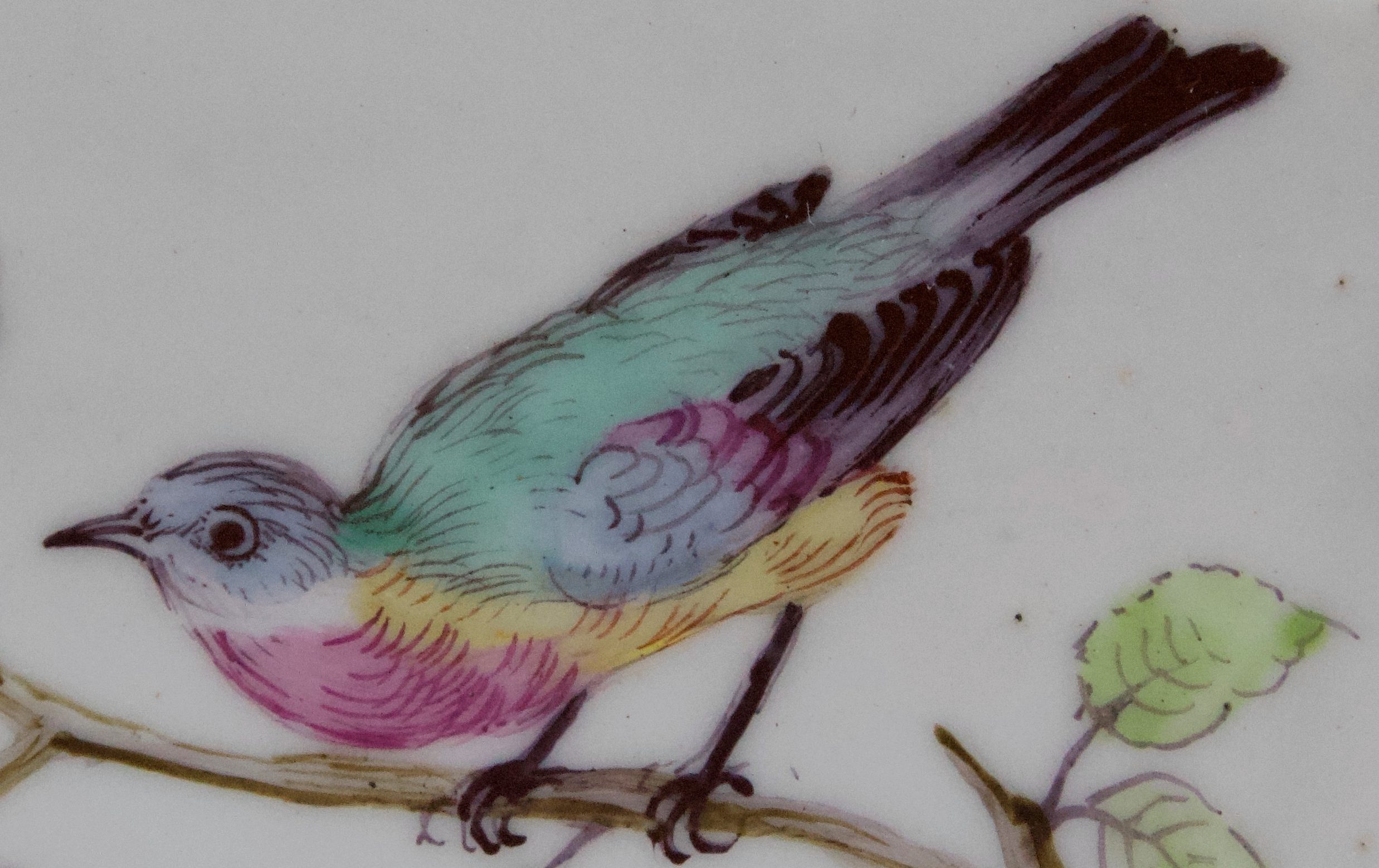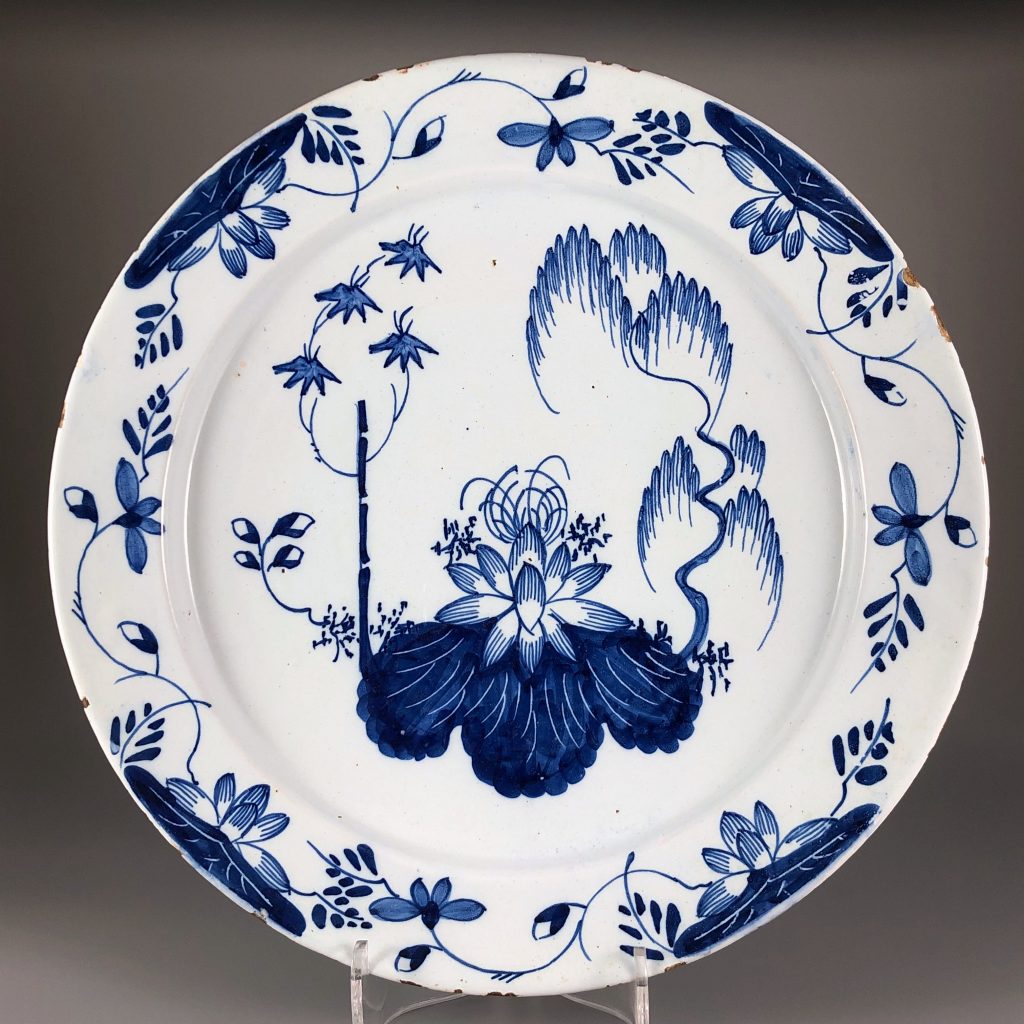A Bristol tin-glazed Charger, circa 1750
The well of this tin-glazed charger is attractively painted in blue with a large lotus flower, the leaves of which are picked out with the use of sgraffito. To the left is a leafy bamboo cane and to the right a willow tree with its drooping branches. The wide lip is painted with four lotus flowers and trailing vegetation. The reverse is decorated with a series of blue-painted X and II marks encircling the foot rim.
To the Chinese, the willow is associated with friendship, whilst bamboo represents strength and courage. The lotus flower symbolises purity of heart and mind.
With this style of decoration, the English delftware artists sought to emulate designs found on Chinese blue and white porcelain produced during the reign of the Kangxi Emperor (1661-1722).
Condition: A most decorative charger with no cracks or restoration, just typical losses and small chips to the fragile tin glaze surrounding the rim and foot. There is expected wear from use. In one or two places, the thick, bluish glaze has crawled during firing, revealing small areas of the biscuit body. Stilt marks and pinholes are visible on the underside.
Dimensions: Diameter 34 cm
Delftware: The Tin-glazed Earthenware of the British Isles, Michael Archer (V&A/HMSO, 1997).
Fair as China Dishes: English Delftware, Michael Archer and Brian Morgan (International Exhibitions Foundation, 1977).
English Delftware, F.H. Garner and Michael Archer (Faber & Faber, 1972).















